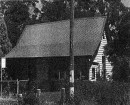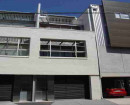Back to search results
Braybrook Shire Hall site
Ballarat Road, DEER PARK VIC 3023 - Property No 127
ICI Residential Precinct
Braybrook Shire Hall site
Ballarat Road, DEER PARK VIC 3023 - Property No 127
ICI Residential Precinct
All information on this page is maintained by Brimbank City.
Click below for their website and contact details.
Brimbank City
-
Add to tour
You must log in to do that.
-
Share
-
Shortlist place
You must log in to do that.
- Download report
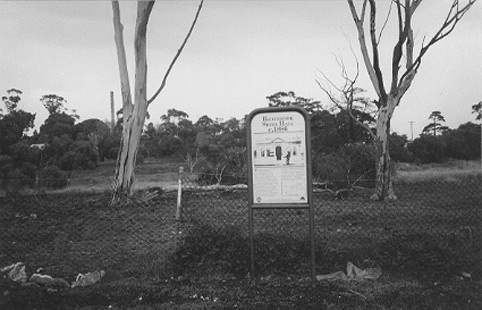
1601 - Brimbank City Council Post-contact Cultural Heritage Study 2000

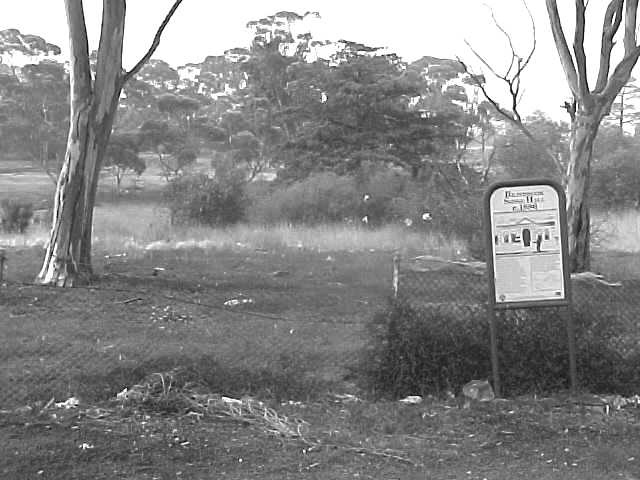
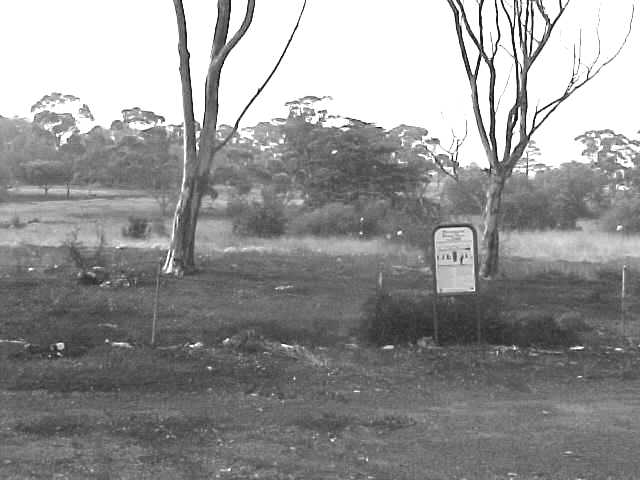
On this page:
Statement of Significance
Individual place statement of significance::
The site of the former Braybrook Shire hall is of local archaeological significance for its potential to reveal evidence of the beginnings of municipal government in the City of Brimbank. This site is historically significant as the area which was once the local government centre of Braybrook Shire, which for many years (1871-1916) covered a large area from Maidstone, Braybrook and Maribyrnong to Rockbank and Toolern Creek at Melton. Although the bluestone shire hall, built here in 1886, no longer exists, the site is worthy of archaeological investigation.
Precinct statement of significance::
The ICI Residential Heritage Area is of State historical and architectural significance as a rare and distinctive company township and for its association with the nineteenth century origins and twentieth century expansion of the former Nobel (later ICIANZ, now ORICA) factory which became the major private manufacturer of explosives and munitions in Australia.
The estate, initiated by Leathercloth Pty. Ltd., (a subsidiary of Nobel) is one of a number of company sponsored housing schemes in the Brimbank municipality and reflects a pattern of development where nationally important industries established in green-fields sites beyond the urban fringe and so needed to provide accommodation and other facilities for workers. The inclusion of the recreation reserve in the precinct and the adjacent separately listed Deer Park Hall, and Hunt Club Hotel (a former ICI training centre) further demonstrate the company role in local planning and development.
The precinct is significant for its association with the largest explosives, chemicals and plastics manufacturer in Australia, originally established here under the importer Jones Scott and Co in the 19th century, and then becoming the Australian Lithofracteur Company (Krebs Patent), a rival to Nobel's dynamite patent, and in production in Australia only a couple of years after Nobel's Ardeer factory was opened. It later merged with the Nobel company and then became ICIANZ before the most recent change to ORICA.
This important industry played a major role in mining through the development of progressively more efficient and safer explosives. It also contributed to wartime production in ammunition, initiators and in World War Two, the development of synthetic ammonia production and construction of the Defence Explosives Annexe No 5 (later the Albion Explosives Factory). The Leathercloth plant was influential in the development of synthetic materials for the motor industry including vinyl seat fabrics and hoods, and has continued to play an important role in synthetic fabrics.
The houses in Station Road, Ballarat Road, Hume Street and Hyde Street reflect a sequence of development in their distinctive styles and forms, reflecting the colonial origins of the company in their Indian Bungalow forms as well as giving insight to the social and economic status of their proposed occupants with the larger and more elaborate houses intended for factory managers. The inclusion of concrete houses in the estate also points to the innovation in building in the later period, possibly as a response to war-time material shortages.
The recreation reserve and contemporary (but altered) pavilion are significant in demonstrating the role of the company in providing community services to their workers, and as evidence of the urban design and landscape approaches to company housing in the period.
The site of the former Braybrook Shire hall is of local archaeological significance for its potential to reveal evidence of the beginnings of municipal government in the City of Brimbank. This site is historically significant as the area which was once the local government centre of Braybrook Shire, which for many years (1871-1916) covered a large area from Maidstone, Braybrook and Maribyrnong to Rockbank and Toolern Creek at Melton. Although the bluestone shire hall, built here in 1886, no longer exists, the site is worthy of archaeological investigation.
The ICI Residential Heritage Area is of State historical and architectural significance as a rare and distinctive company township and for its association with the nineteenth century origins and twentieth century expansion of the former Nobel (later ICIANZ, now ORICA) factory which became the major private manufacturer of explosives and munitions in Australia.
The estate, initiated by Leathercloth Pty. Ltd., (a subsidiary of Nobel) is one of a number of company sponsored housing schemes in the Brimbank municipality and reflects a pattern of development where nationally important industries established in green-fields sites beyond the urban fringe and so needed to provide accommodation and other facilities for workers. The inclusion of the recreation reserve in the precinct and the adjacent separately listed Deer Park Hall, and Hunt Club Hotel (a former ICI training centre) further demonstrate the company role in local planning and development.
The precinct is significant for its association with the largest explosives, chemicals and plastics manufacturer in Australia, originally established here under the importer Jones Scott and Co in the 19th century, and then becoming the Australian Lithofracteur Company (Krebs Patent), a rival to Nobel's dynamite patent, and in production in Australia only a couple of years after Nobel's Ardeer factory was opened. It later merged with the Nobel company and then became ICIANZ before the most recent change to ORICA.
This important industry played a major role in mining through the development of progressively more efficient and safer explosives. It also contributed to wartime production in ammunition, initiators and in World War Two, the development of synthetic ammonia production and construction of the Defence Explosives Annexe No 5 (later the Albion Explosives Factory). The Leathercloth plant was influential in the development of synthetic materials for the motor industry including vinyl seat fabrics and hoods, and has continued to play an important role in synthetic fabrics.
The houses in Station Road, Ballarat Road, Hume Street and Hyde Street reflect a sequence of development in their distinctive styles and forms, reflecting the colonial origins of the company in their Indian Bungalow forms as well as giving insight to the social and economic status of their proposed occupants with the larger and more elaborate houses intended for factory managers. The inclusion of concrete houses in the estate also points to the innovation in building in the later period, possibly as a response to war-time material shortages.
The recreation reserve and contemporary (but altered) pavilion are significant in demonstrating the role of the company in providing community services to their workers, and as evidence of the urban design and landscape approaches to company housing in the period.
Show more
Show less
-
-
Braybrook Shire Hall site - Physical Description 1
Description
The original shire hall was a classically-derived building of typical 'Boom' period style, with a parapet wall to the front and corrugated iron roof. Constructed in brick, on bluestone foundations and rendered, it had a central pediment over arched entrance, flanked on each side by semicircular paired windows, and rusticated quoins. It was demolished in the early 1930s and the site ceased to be used for any purpose, although the treed, sheltered spot on the creek bank may have been an informal wayside stop for road traffic. As it stands today, there is little to see of the hall site. Some hand-made bricks are scattered on the surface towards the creek and a small area of bluestone footings were visible for a time before being obscured by recent dumping. Considerable domestic artefacts can be found (for example, ceramics, bottle glass). However, this material may be the result of dumping rather than being contemporary with the occupation of the hall.Braybrook Shire Hall site - Physical Conditions
The building is demolished. Archaeological remains may survive and are indicated by some hand-made bricks scattered on the banks of Kororoit Creek. Dumping of rubbish and fill has obscured the site.
Braybrook Shire Hall site - Historical Australian Themes
7 Governing
7.2 Developing institutions of self-government and democracyHeritage Study and Grading
Brimbank - Brimbank City Council Post-contact Cultural Heritage Study
Author: G. Vines
Year: 2000
Grading: Local
-
-
-
-
-
BLACK POWDER MILL
 Victorian Heritage Register H2029
Victorian Heritage Register H2029 -
ICI Housing Estate Precinct
 Brimbank City
Brimbank City -
ICI Residential Precinct
 Brimbank City
Brimbank City
-
'Lawn House' (Former)
 Hobsons Bay City
Hobsons Bay City -
1 Fairchild Street
 Yarra City
Yarra City -
10 Richardson Street
 Yarra City
Yarra City
-
-









